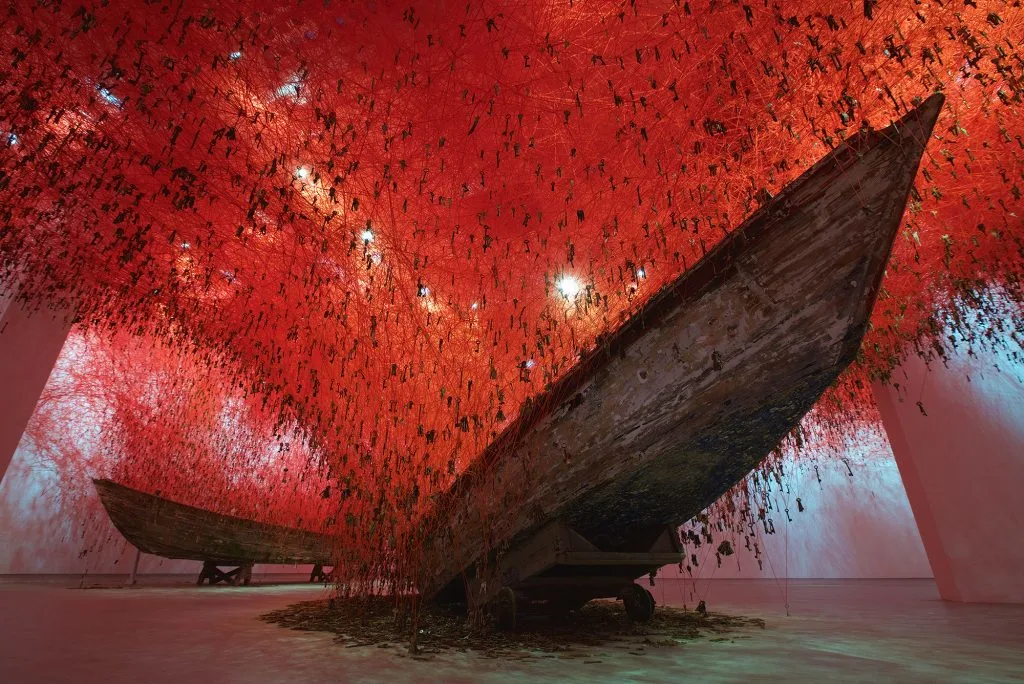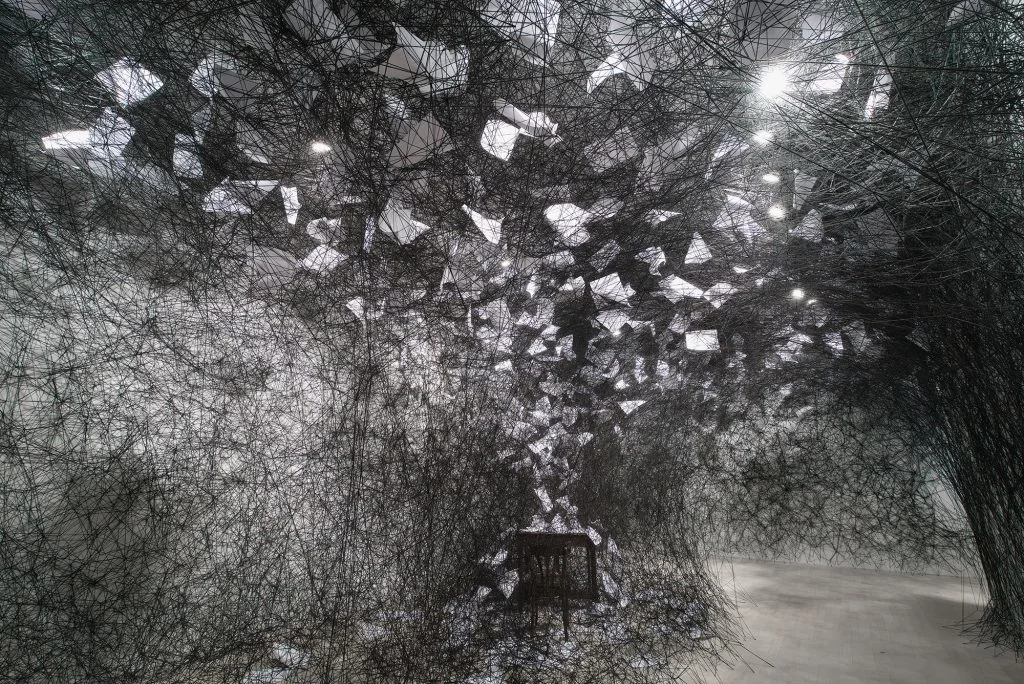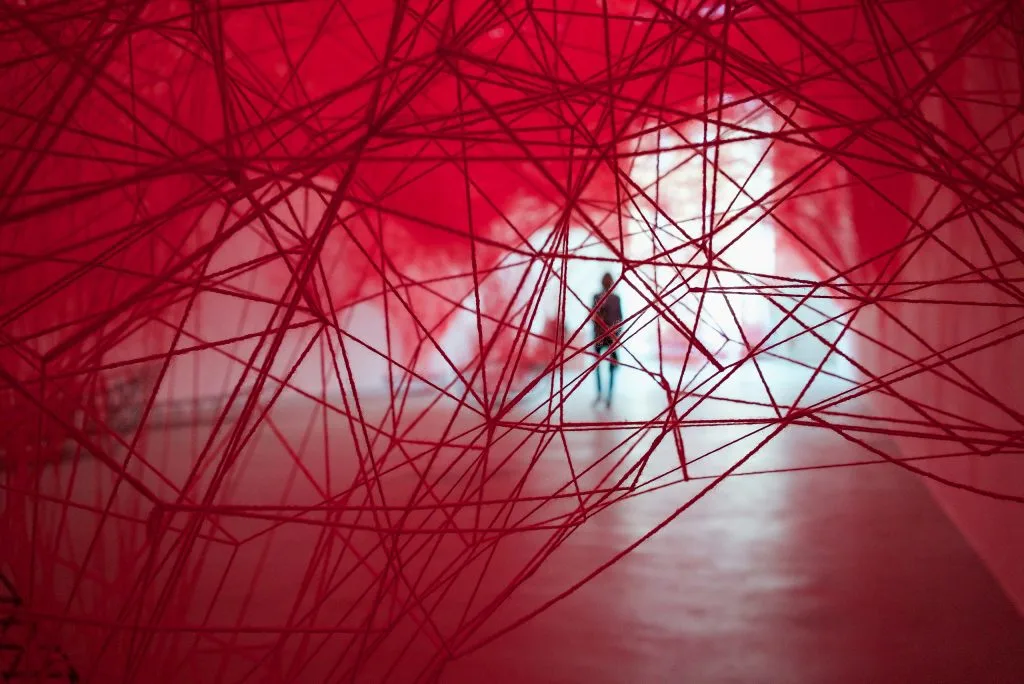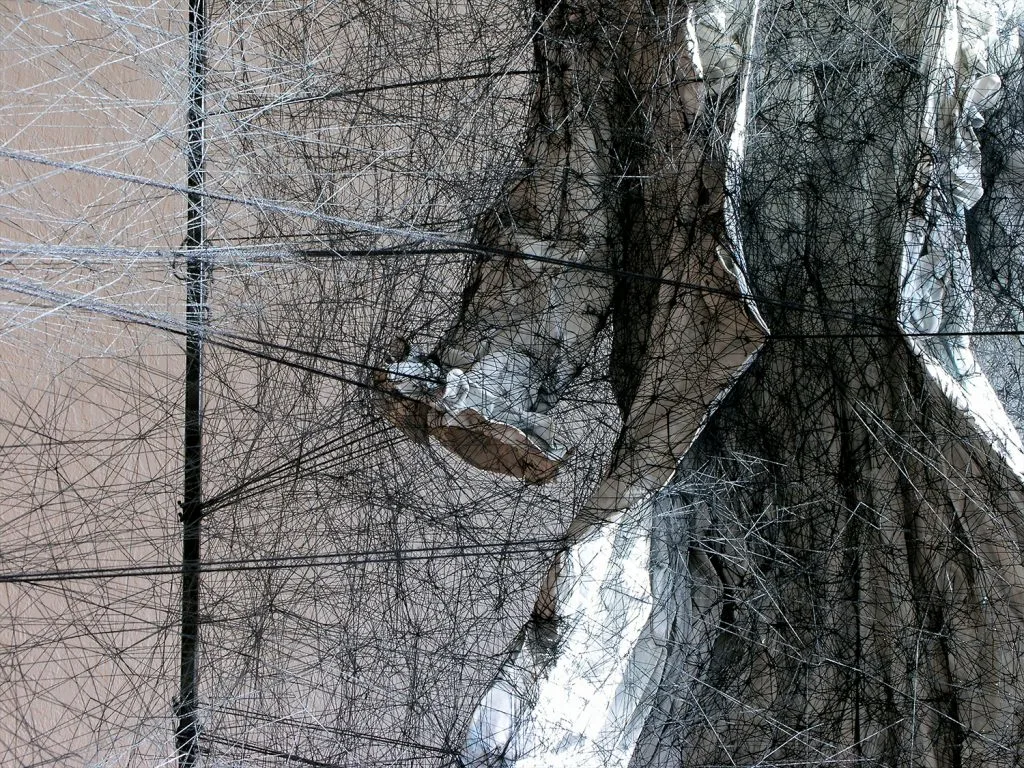
Chiharu Shiota was meant to be a painter. That was always the plan. Then, during her second year of art school in Japan, she fell out of love with the medium she had been intent on mastering.
“I couldn’t paint anymore, because for me painting was just color on the canvas. It had no other meaning whatsoever. I found myself stuck, without being able to go back or forward. But I couldn’t quit art.”
Instead, Chiharu started experimenting with thread, a material which took some of the things she liked about paint and turned them into a more tangible, three-dimensional experience. “Using webs is something that allows me to explore space like a line in a painting – I am drawing with thread into space,” Chiharu explains.
And experiences are exactly what she creates. Her web installations have to be seen to be fully understood. They tread the line between order and chaos, packing an extraordinary emotional punch. The artist often adds objects like furniture, dresses or scattered sheafs of paper into the mix, but they just raise more questions. Are these features trapped in the artworks? Or are they the predators waiting to entrap us?

She is fascinated by what she calls, “the sensation of memory.” She uses the chairs and dresses and even boats in her work as narrative devices.
“I like to work with objects that have a trace of memory,” she says. “Old objects always have a story behind them. I start thinking of who could have used it before, and my imagination runs free.”
Her work is inseparable from the spaces in which she installs it. When she visits a gallery, she has a very immediate reaction. “The minute I walk in, my body transcends another dimension and I can really picture my work within that room. I then do some simple sketches.
“The weaving process is quite random except for the triangle pattern I follow which marks the rhythm of the set-up. Weaving in the air, alone or in a group, is a particular moment, a form of dance. I see it as a meditation, a parallel world.”
How though does she tell when a piece is finished? “When I can no longer trace a yarn installation or art object with my eye, it begins to feel complete.”

Chiharu now lives and works in Berlin, and says the move from east to west shifted both how she sees – and is seen by – the world. “When I lived in Japan, I never thought of my own nationality. But since I moved to Germany, I have been more aware of my Japanese heritage. Being from Japan and living in Germany has led to this ‘in between’ sensation that has remained since I left.”
Moving to Berlin in 1996, Chiharu got the chance to study with Marina Abramović. The pair got on well, and Chiharu says she was influenced by the way the Serbian performance artist blurred the line between herself and her work.
“She was always referring to her personal experience as an artist,” Chiharu explains. “I always like to connect with people through my work, to move them with what my art expresses.
“The moment a visitor walks into the space of my installation, he or she is already involved and enters a world of memory, feelings, relationships – everything makes a person a human being. I want them to dig deep into their souls so they can question our sense of belonging.”




